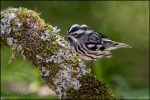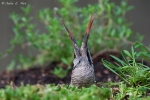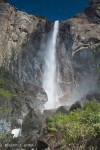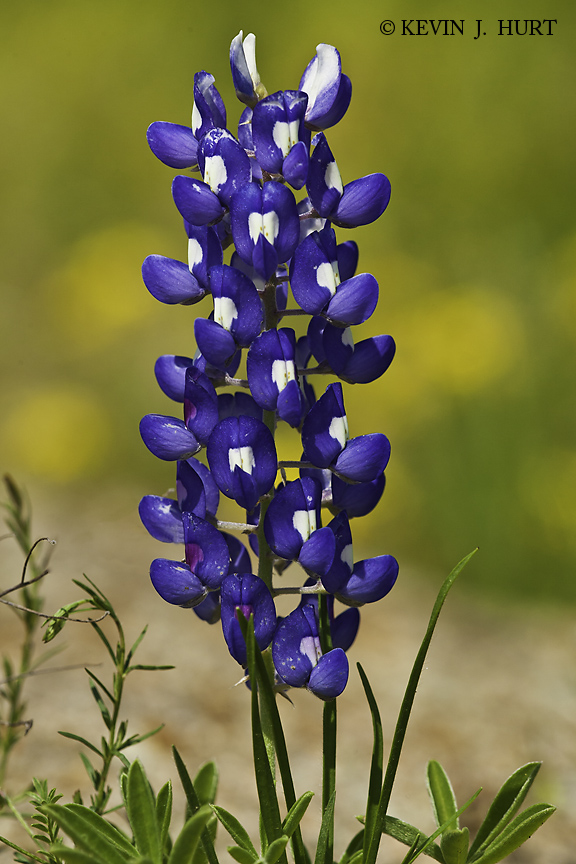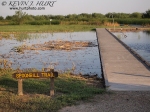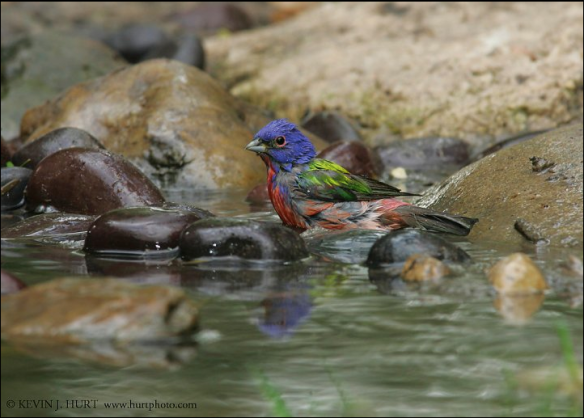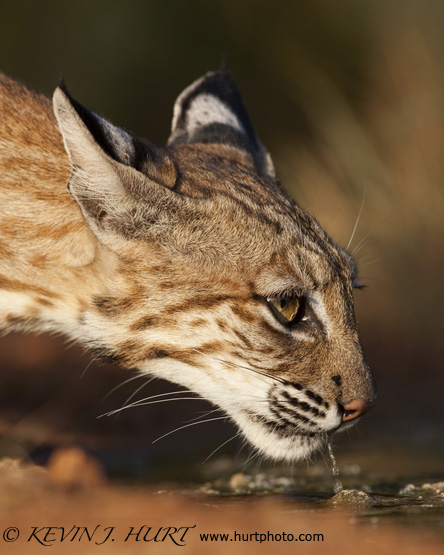
SPI-WBC Headquarters.
The past three where to photograph articles I have written have been about places to shoot on private ranchland. While I believe photographing on private land is the best way to capitalize on capturing the variety of birds and mammals found in South Texas, I also recognize that it’s not in everybody’s budget or desire to do so. Therefore, in a continuation of my series of places to photograph, I’m going to write about some of the public places I often frequent with a camera and share some of the best ways to maximize your time at these locales.

View from tower overlooking Blinds 1, 2, 3, and part of 4. This is overlooking the saltwater intake from the laguna madre.

View from tower of Blinds 5 and 6. You can drive your vehicle on the flats in the distance and get some great sunsets.
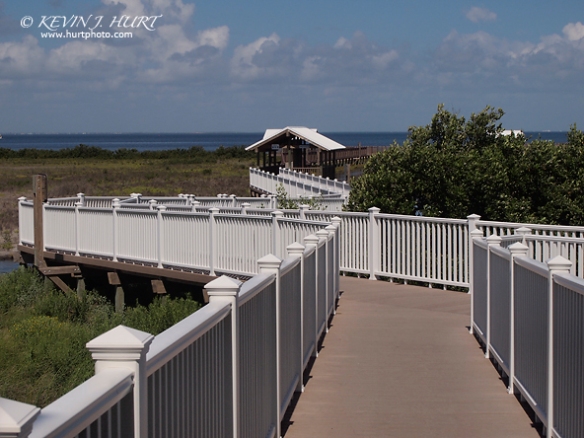
View of boardwalk at SPI-WBC.
The South Padre Island World Birding Center is located adjacent to the SPI convention center. It contains over 4800 linear feet of boardwalks and 7 bird blinds. Numerous shorebirds can be easily photographed at the center. Some of the most common birds you will find there include the Great Blue Heron, White Ibis, Black-necked Stilt, Tri-Colored Heron, Royal Tern, Seagulls, Roseate Spoonbill, Least Bittern, Reddish Egret, Black-bellied Whistling Duck, Killdeer, and Snowy Egret. This list is not exhaustive.

Great Blue Heron. The largest heron of North America. Talk about biting off more than you can chew, the GBH has been known to choke to death on prey that is too large.

Black-bellied Whistling-Duck. Sometimes called the black-bellied tree-duck because they like to perch and nest in trees.

White Ibis. These birds help the fish population by eating crabs and crayfish.

Roseate Spoonbill. In the USA, these birds are found along the coast of Texas, Louisiana, and southern tip of Florida. Look for them along mangroves, saltwater lagoons, and large, shallow lakes.
In addition to the abundant species of birds, this is also a good location to photograph the American Alligator. No your eyes did not deceive you, I wrote alligator. But alligators are fresh-water reptiles and the coast is obviously salt-water so what gives? Well, the SPI birding center has both a large fresh-water lake that is served from the city’s water supply, and a salt-water inlet fed from the Laguna Madre so you get the best of both worlds here. Alligators can tolerate brackish water so they are doing just fine in this environment.

American Alligator At Sunrise.
There are three alligators living on the property and one is generally very predictably seen at Blind #7. The alligator will often swim right up to you. Don’t worry, it’s actually right beneath you from the boardwalk so you’re quite safe…just don’t fall in. Feeding is prohibited but there it sits, waiting for a meal, which I believe it thinks is you. It will slowly sink to the bottom and wait underneath the water, rising slowly after a few minutes. It’s an amazing reptile and an awesome creature to photograph but it is primarily a morning blind so you’ll have to wake up early to capture the gator in nice light. Afternoon shots can still be had but you’ll need a little luck on your side and hope the gator cooperates with where it decides to swim. It prefers to rest on the west bank and that would mean shooting into the sun and a loss of contrast, color, or both, in the evening.

American Alligator.
From Blind #6 you can often see gulls and terns skimming the water. It’s a great location to photograph them in flight. While you are there, don’t forget to keep your eyes on the cattails. There are plenty of least bittern and sometimes red-winged blackbirds too.

Laughing Gull. Skimming the water.

Laughing Gull.
Finally, if you are there in the evening, you are sure to see and photograph some amazing sunsets. You can shoot from either blind #3 or #4 and capture the sun on the water, perhaps a boat or two in the image. I recommend you also shoot from a location on the boardwalk where you can incorporate Blind #3 or #4 into the picture. Immediately North of the convention center, you can drive your car right up to the water and photograph the sunset from there. There are often people canoeing the laguna madre so try to incorporate that into your pictures too as this adds an interesting element to the photograph.

Canoeist Paddling The Laguna Madre At Sunset.

Sunset Over The Laguna Madre.

Laguna Madre Sunset. View from the boardwalk at the SPI-WBC.
Other places on South Padre Island and Port Isabel: If you drive as far North as the road allows, there are wonderful sand dunes that you can try to photograph. If you go to Access #5, you can drive your vehicle onto the beach. It’s a great place to photograph the sunrise. Finally, don’t forget about Port Isabel. The shrimp boats go in and out of the channel and if you get lucky, you might photograph them coming in/going out. I think it’s more of a sunset shot given the direction of light. At the very least, you should be able to photograph them while docked. Brown Pelican are often perched on posts on the Port Isabel side, but I haven’t found a good location from which to photograph them. If you know of any, send me a message.

Moonrise over sanddunes at South Padre Island, Texas.

Sunrise On The Gulf Of Mexico.

Port Isabel Lighthouse. Constructed in 1852 to make seagoing along the Texas coast less dangerous, it is the only lighthouse of the original 16 constructed in Texas that is open to the public.

Shrimp Boats At Dock.
During the month of April to about mid-May, the convention center is a prime spot to photograph migratory birds flying to northern nesting grounds. A few examples of what you’ll find are indigo bunting, lazuli bunting, scarlet tanager, chestnut sided warblers, baltimore oriole and more. There are plenty of birds…but plenty of photographers and birders there too so you’ll have to jockey for position but it’s worth the trip to photograph these amazing birds.

Indigo Bunting.

Summer Tanager.

Baltimore Oriole.
Equipment: You’ll want your longest focal length. I’m often using the 500mm on a crop-factor camera. You may want to carry your best bird-in-flight lens on your shoulder to capture that action but long lens is the name of the game here for birds. If you are after sunsets, a wide angle or 70-200 lens will be just about right but the 500 will also work wonders as the sunset will be larger in the image. Caution: Do NOT look through your viewfinder at the sun as this will cause damage to your eye. If you have live view, then put your camera in that mode and compose the shot. Otherwise, meter the sky adjacent to the sun, set your camera on manual mode with the metered settings, then recompose quickly and fire away.
UPDATE: I was at the SPI birding center in July 2011 and there are a couple of negative things to report. First, the freshwater is getting overgrown with cattails. You can still get great images, but the cattails have taken over and in short time will only get worse. Second, the boardwalk connecting the birding center and convention center now has a big gap which made no sense to me. I used to park at the convention center and walk to Blind #7 in the morning to photograph the alligator. At present, you’ll have to park at the birding center headquarters and walk at least 4000 of the 4800 linear feet to get there. I may be exaggerating a bit but it’s a long walk with heavy equipment. I visited with the center staff one morning and in short, the gap in the boardwalk has to do with a political battle between the city and the county. No telling how or when that is resolved. They did acknowledge the cattail problem and they stated that during the fall, they had plans to weed them out. If they follow through with those plans, the photography will get much better so here’s hoping they do.
That’s all for now folks. Remember to spend time with your kids outdoors. I did that very thing at the birding center this past July and they had a great time…but not as great a time as their dad.














